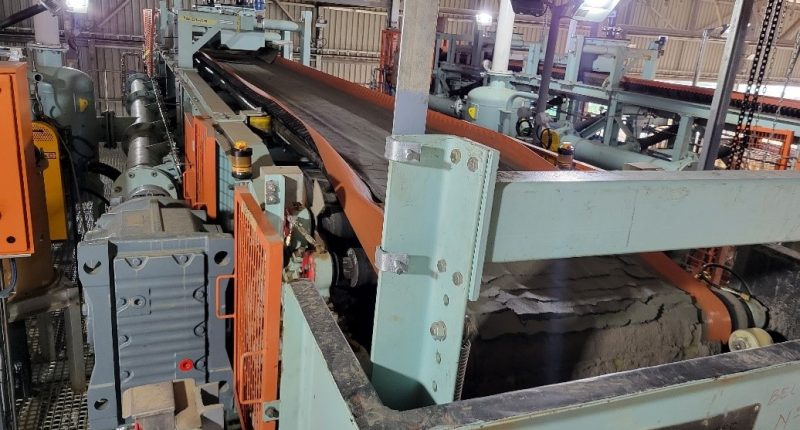Record quarterly tin production
A profitable mining stock on the Venture Exchange that produces 6.5 per cent of the world’s mined tin recently beat its own record and achieved a record quarterly production of the metal.
Alphamin Resources (TSXV:AFM) recently logged quarterly tin production of 4,917 tonnes for the quarter ended September 2024, marking a 22 per cent increase from the prior quarter. This puts the company 55 per cent above that of the previous year’s production.
This significant rise is attributed to the Mpama South expansion, which contributed for a full quarter compared with half of the prior quarter. In a news release, the company explained that the ore processed increased by 37 per cent to 229,107 tonnes, with a tin grade of 2.9 per cent, aligning with the company’s annual target of processing 900,000 tonnes of ore at a tin grade of approximately 3 per cent, producing around 20,000 tonnes of contained tin per year. Both processing facilities performed well, achieving an overall plant recovery of 73.4 per cent.
Interim fiscal 2024 dividend declared
Alphamin’s Board has declared an interim fiscal year 2024 cash dividend of C$0.06 per share on the common shares, totalling approximately US$57 million. The dividend will be payable on Nov. 4, 2024, to shareholders of record as of Oct. 25, 2024. The dividend has doubled following the expansion and the current dividend yield is now roughly 10 per cent.
Financial performance and guidance
Alphamin’s Q3 earnings before interest, taxes, depreciation, and amortization (EBITDA) is projected to rise by 69 per cent to US$91.5 million, up from US$54.2 million in the previous quarter, driven by higher tin production and sales volumes. Tin sales volumes increased by 71 per cent to 5,552 tonnes, including the clearance of a 600-tonne sales backlog from the prior quarter. The guidance for all-in sustaining cost (AISC) per tonne of tin sold remains steady at US$15,700, with off-mine costs expected to decrease in early Q4 2024 because of a reduction in marketing fees.
Alphamin and the tin market
Alphamin’s expansion comes at a time of global tin supply challenges, with major producing regions facing production issues and a lack of significant new investments in the industry. Demand for tin in solar installations remains strong, about 5 per cent, but this proportion is expected to increase significantly according to Crux Investor.
Semiconductor sales, a key application for tin, are improving. Other applications are expected to recover as major economies enter a lower interest rate cycle and China’s economic stimulus takes effect. These factors are favourable for tin prices, with exchange-traded tin stocks declining.
Demand landscape
Researchers from the Massachusetts Institute of Technology have identified tin as the metal most likely to benefit from future technological advancements. Tin is essential for soldering circuit boards and is predicted to be crucial for next-generation energy-generating and storage devices. The growth of sectors such as AI, data centres, semiconductors and solar energy is expected to continue, driving demand for tin. Historically, tin demand has grown at a steady 2 per cent-3 per cent per annum, but supply constraints and regulatory challenges suggest that global supply might struggle to meet future demand. This expanded production can serve the company well as it delivers more tin into a constrained supply market.
Supply landscape
The global tin supply landscape is shifting, with four countries that historically produce 70-80 per cent of the tin concentrate supply facing challenges:
- China: Mined tin output has fallen by 28 per cent over the past decade, with stability issues.
- Indonesia: Steady decline in mined tin, as mining is now predominantly through dredging in the ocean as opposed to alluvial mining on-shore, which has mostly depleted. This has been exacerbated by refined export restrictions.
- Myanmar: Decreasing mined tin output now that teams are working in more challenging areas, worsened by mining bans.
- Peru: Recent recovery in mined tin may be temporary given the additional tin from tailings retreatment will run out in a few years’ time, along with the threat of social unrest.
China, a growing net tin importer, has constrained tin mining. In 2023, China imported an estimated 33,000 tonnes of tin, which is a 7.6 per cent increase compared with 2022 as reported by IndexBox market analysis. Global mined tin production is under pressure because of inflation and challenging mining jurisdictions, pushing up costs for new market entrants.
The investment corner
Since the year began, Alphamin Resources Corp. stock has climbed more than 32 per cent and sits 40 per cent higher than it was this time last year. The company is delivering a strong operational performance with record tin production and significant financial growth. Given the current favourable market conditions, it is in the right position for future growth. The increased interim dividend reflects confidence in sustained profitability, making Alphamin an attractive investment opportunity in the tin market.
Deeper due diligence by investors should consider Alphamin’s robust production capabilities, strategic market positioning, and the positive outlook for tin demand driven by technological advancements and economic recovery.
Join the discussion: Find out what everybody’s saying about this profitable mining stock on the Alphamin Resources Bullboard, and check out the rest of Stockhouse’s stock forums and message boards.
This is sponsored content issued on behalf of Alphamin Resources Corp., please see full disclaimer here.
(Top photo: Alphamin Resources Corp.)

